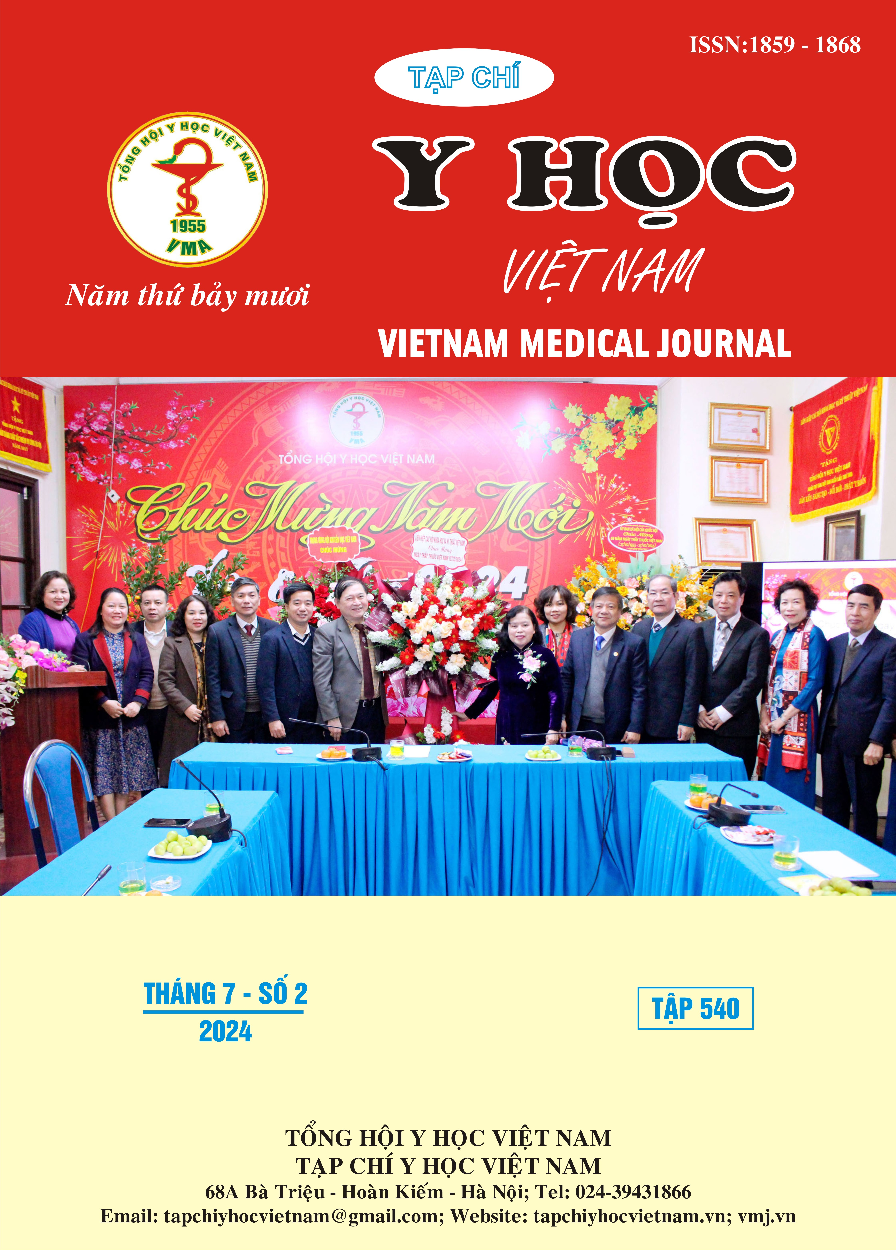EVALUATE THE RESULTS OF INTERMITTENT EXOTROPIA SURGERY IN CHILDREN
Main Article Content
Abstract
Background: Intermittent exotropia progresses worsens and lead to impaired binocular functions. Surgery is to preserve binocular vision, anti-suppression and disorders caused by vergences. However, the proper timing of surgery, restoring binocular functions and postoperation binocular vision therapy/orthoptics are being debated. Aims: to evaluate whether postoperative of binocular functions in children with intermittent exotropia. Methods: A prospective study 44 participants under 16 years of age who underwent strabismus surgery for intermittent exotropia between February and June 2023 at the department of Pediatrics-Ho Chi Minh City Eye hospital. Results: The average age of the participants was 10.07±3.17 years. The surgical success rate (esotropia ≤5 pd to exotropia ≤10 pd) was 79,5%. Positive fusional vergences improved to a good level of 68,2%. Near good sensory fusion was 93.2%, at distance sensory fusion was 54.6%. Near high&morderate stereoacuity was 50% – at distance stereoacuity was 31,8%. Conclusion: Positive fusional vergences maintains binocular alignment after surgery. There is no association between the results of surgical success and the restoration of sensory fusion and stereoacuity.
Article Details
Keywords
intermittent exotropia, binocular vision.
References
2. Nguyễn Thùy Trang (2018), Đánh giá thị giác lập thể trước và sau phẫu thuật cơ năng ở trẻ em, luận văn Thạc sĩ y học, Đại học Y Hà Nội.
3. Holmes J.M., Hatt S.R., Leske D.A. (2015). Is intermittent exotropia a curable condition?. Eye, 29(2), 171–176.
4. Joo H.J., Choi J.J., Ro J.W. et al. (2022). Comparison of sensory outcomes in patients with successful motor outcome versus recurrent exotropia after surgery for intermittent exotropia. Sci Rep, 12(1), 13195.
5. Jung J.-W, Lee S.-Y. (2010). A Comparison of the Clinical Characteristics of Intermittent Exotropia in Children and Adults. Korean J Ophthalmol, 24(2), 96.
6. Lajmi H., Ben Yakhlef A., El Fekih L. et al. (2021). Outcomes of intermittent exotropia surgery. J Fr Ophtalmol, 44(7), 1001–1007.
7. Lee C - M. (2018). Factors affecting surgical outcome of intermittent exotropia. Taiwan J Ophthalmol, 8(1):, 24-30.
8. Spierer O, Spierer A. (2021). Unilateral lateral rectus recession is an effective surgery for intermittent exotropia in young children. BMC Ophthalmol, 21(1), 10.
9. Dong Y., Liu Y.-Y. et al. (2021). Surgery at early versus late for intermittent exotropia: a Meta-analysis and systematic review. Int J Ophthalmol, 14(4), 582–588.
10. Wu Y., Xu M., Zhang J. et al. (2020). Can Clinical Measures of Postoperative Binocular Function Predict the Long-Term Stability of Postoperative Alignment in Intermittent Exotropia?. J Ophthalmol, 1–9.


